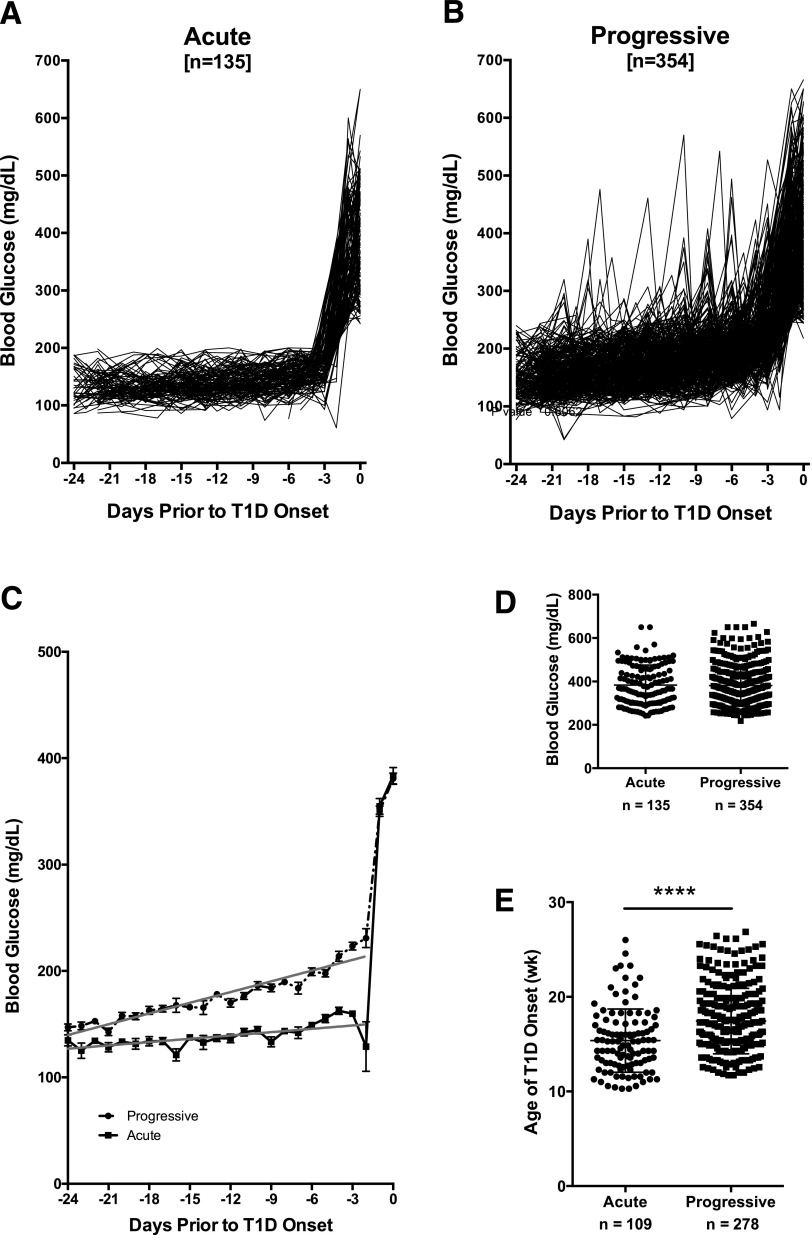Figure 2.
In NOD/ShiLtJ females, diabetes onset can be categorized as acute or progressive. A: Diabetic NOD/ShiLtJ females experienced acute (n = 135) (A) or progressive (n = 354) (B) T1D onset according to their morning blood glucose levels in the 24 days prior to disease onset (set to day 0). Acute onset was defined as blood glucose <200 mg/dL prior to onset, whereas progressive was defined as at least one blood glucose reading ≥200 mg/dL prior to onset. C: Linear regression analysis of blood glucose values from day −24 to −2 prior to T1D onset (set to day 0) demonstrates significantly different disease development in progressive (dashed line) vs. acute (solid line) onset groups (P < 0.0001). D: Blood glucose levels did not differ between acute and progressive NOD mice on the day of T1D diagnosis (P = 0.966, Student t test). E: Animals belonging to the acute-onset group were significantly younger at the time of disease onset compared with mice with progressive T1D onset (****P < 0.0001, Student t test). Data are presented as mean ± SEM. wk, week.

